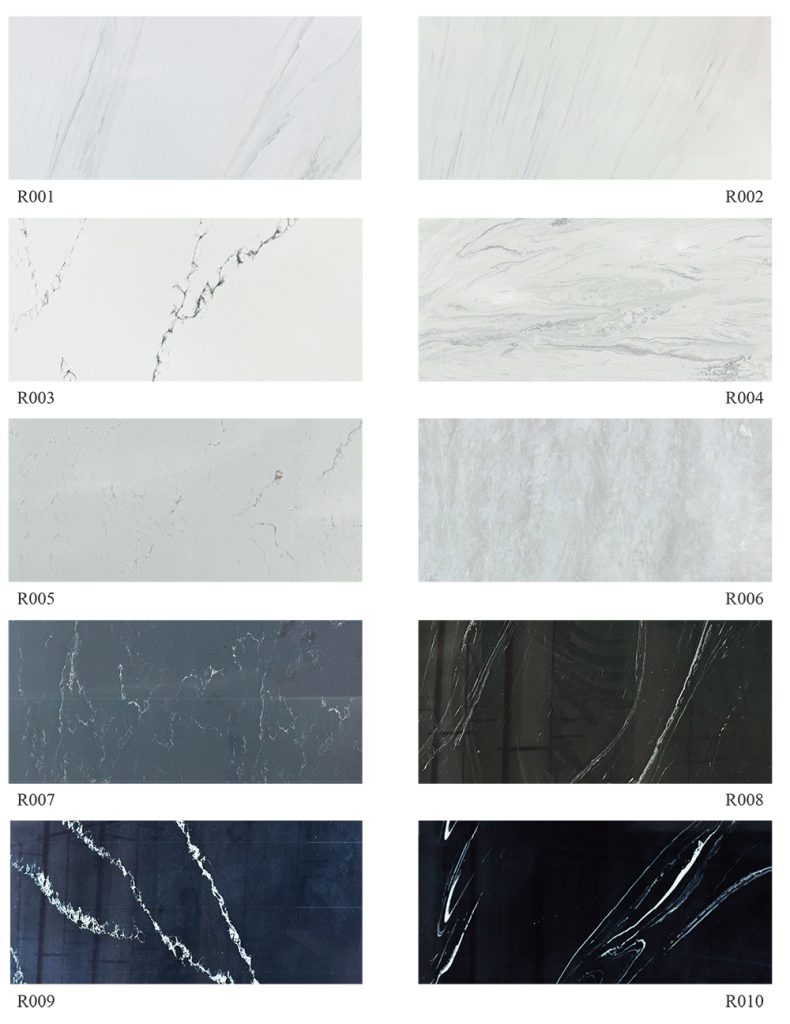Our Location
304 North Cardinal St.
Dorchester Center, MA 02124

Artificial stone, a modern industrial product, has demonstrated its unique charm in many fields, especially in architectural decoration and furniture manufacturing. It is composed of natural stone powder, polymer polymers and many other materials mixed in a certain proportion, and is endowed with diverse textures and colors through technological processing. Compared with natural stone, artificial stone has a series of advantages, but at the same time, it also has some disadvantages that cannot be ignored. This article will explore in detail the advantages and disadvantages of artificial stone, aiming to provide you with a comprehensive understanding.
Advantages of Artificial Stone
1.Good Environmental Performance
Due to the wide range of main raw materials, such as natural stone powder and industrial waste, the production of artificial stone occupies fewer natural resources, which is in line with the requirements of sustainable development. Meanwhile, the waste generated during the production process can be recycled, reducing environmental pollution.
2.Good Processing Performance
Compared with natural stone, artificial stone is easier to cut, carve and polish. It can be processed into various complex shapes and fine surfaces, making it suitable for the production of various high-end decorative materials.
3.Diverse Colors and Textures
Artificial stone can be customised in various colors and textures through artificial mixing, meeting the individual needs of different consumers. This diversity is hard to match for natural stone.
4.Stable Physical Properties
Artificial stone has relatively superior compressive, flexural and wear-resistant properties, and is less affected by the external environment, such as temperature and humidity changes. This makes artificial stone have better stability in humid or large temperature difference environments.
5.Easy to Clean and Maintain
Due to the smoothness and tightness of the surface of artificial stone, it is not easy to adsorb stains and is relatively easy to clean. Meanwhile, artificial stone does not need to be waxed regularly like some natural stones, and the maintenance work is relatively simple.
Disadvantages of Artificial Stone
1.Not Resistant to High Temperatures
Most artificial stone materials are not resistant to high temperatures and are prone to deformation or colour change in high-temperature environments, affecting their aesthetics and service life.
2.Weak Impact Resistance
Although artificial stone has a certain degree of hardness, its resistance to impact is relatively weak. It is prone to cracking or even breaking under the impact of heavy objects or violent impacts.
3.May Have Chemical Odour
Newly produced artificial stone may release a slight chemical odour within a certain period of time, which may cause discomfort to sensitive people. Although this odour will gradually dissipate over time, good ventilation may be required during the initial use.
4.Limited Environmental Adaptability
Compared with natural stone, artificial stone has slightly limited environmental adaptability. Under extreme weather conditions, such as strong sunlight and continuous low temperature, the surface of artificial stone may age and fade.
Differences between Artificial Stone and Natural Stone
1.Composition
Natural Stone: Natural stone is formed through natural processes on Earth over millions of years, including granite, marble, limestone, slate, etc. These stones are directly mined from the earth’s crust and used in various decorative and construction applications after cutting and polishing.
Artificial Stone: Artificial stone (also known as synthetic stone, engineered stone) is manufactured by artificial methods, usually made by mixing and pressing natural mineral fragments (such as quartz), resins and other additives. The manufacturing process can be precisely controlled, so a variety of colours and textures can be produced.
2.Appearance
Natural Stone: Because it is naturally formed, the texture and colour of each piece of natural stone are unique, which provides uniqueness and diversity for decoration.
Artificial Stone: Since it is produced under controlled conditions, artificial stone can have a uniform and consistent colour and texture. This makes it easier to match when used in large areas.
3.Performance
Natural Stone: The durability and hardness of natural stone vary depending on the type, but generally require more maintenance. For example, marble is easily corroded by acidic substances, and granite needs to be sealed regularly to prevent staining.
Artificial Stone: Due to its non-porous nature, artificial stone is usually more wear-resistant and stain-resistant and easier to maintain. For example, quartz stone countertops are less likely to be stained and do not need to be sealed frequently.
4.Applications
Based on their characteristics, natural stones are usually used in places that require a unique aesthetic appearance, such as walls, floors and countertops in luxury homes or commercial projects.
Because of its durability and easy maintenance, artificial stone is often used in kitchens, bathrooms, commercial spaces and other places that require high durability and a consistent appearance.
5.Cost
Natural Stone: The price varies depending on factors such as type, origin and transportation, but some rare and high-end natural stones are quite expensive.
Artificial Stone: Although there are certain manufacturing costs, the price is usually more reasonable compared with natural stone, especially when considering the long-term maintenance cost.
Artificial stone, with its advantages of environmental protection, diverse colours and textures, excellent processing performance and stable physical properties, plays an important role in contemporary architectural decoration and furniture manufacturing. However, its disadvantages, such as being not resistant to high temperatures, having weak impact resistance, possible chemical odour and limited environmental adaptability, also need to be considered by consumers when making choices. When choosing artificial stone materials, the actual application scenarios and personal needs should be comprehensively considered to achieve the best use effect. With the development of science and technology and the progress of materials science, it is believed that the performance of artificial stone will be continuously optimized and improved to better serve people’s lives.
